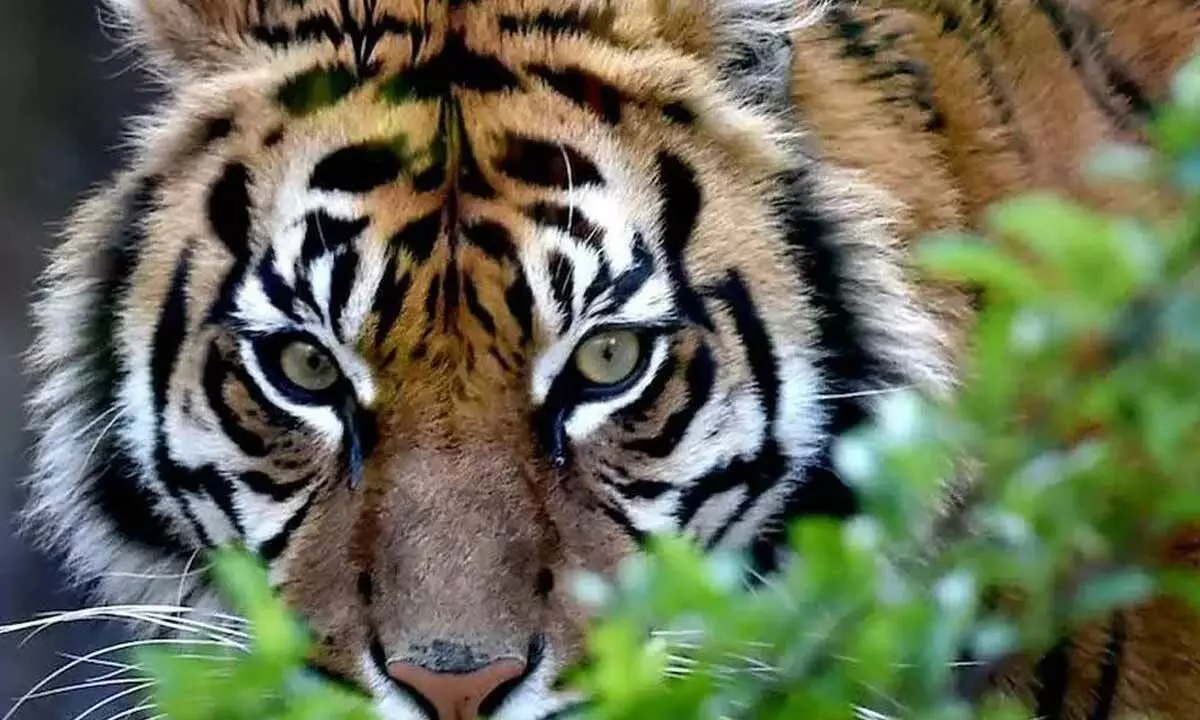How Project Tiger gave the big cat a second life?

How Project Tiger gave the big cat a second life?
One name that was conspicuously missing from the discussions and celebrations around the golden jubilee of Project Tiger was that of Karan Singh, who was Indira Gandhi's point person in the national effort to give the Royal Bengal tiger a second life in the big cat's home country.
New Delhi: One name that was conspicuously missing from the discussions and celebrations around the golden jubilee of Project Tiger was that of Karan Singh, who was Indira Gandhi's point person in the national effort to give the Royal Bengal tiger a second life in the big cat's home country.
The former Sadr-i-Riyasat of Jammu and Kashmir, cabinet minister, ambassador, MP and well-regarded scholar, rewinding back to the days when Project Tiger was born, narrated the sequence of events that led to its birth.
In a conversation with IANS, Singh said: "I was in Mrs Gandhi's Cabinet in 1969. One day, she asked me to take over the Indian Board of Wildlife, the chairman of which was the Maharaja of Mysore (Jayachamarajendra Wadiyar), a fine man but not very mobile."
After taking charge, Singh began to go over the papers related to the Board and was "astounded to see that the national animal was the lion and not tiger".
India's national animal was the lion from 1947 to 1969, inspired of course by the national emblem appearing on the Ashoka Pillar. The lion does not represent India as it is found only in one part of the country. Tigers, however, "are ubiquitously found throughout the country", Singh pointed out, looking back at 1969.
He then set in motion the actions required to get the tiger recognised as the national animal. "I brought that up with Indiraji and she put the proposal through the Cabinet," Singh said. The process of this switch was relatively hassle-free. The Congress had a clear majority and the required Bill was passed in both Houses of Parliament.
"Immediately after that we geared up for Project Tiger. That's the national animal, so let's do something to protect it," Singh said, adding that he did not recall any resistance from any Chief Minister.
Karan Singh took over the Indian Board of Wildlife (now known as the National Board of Wildlife) at the age of 36, and committed himself to the conservation of the big cat.
Talking about the near-disappearance of the tiger, Singh said: "Hunting was a major issue. The maharajas and viceroys had decimated the tiger population."
India had an estimated 40,000 of these big cats in the last century. By 1970, there were just about 2,000 tigers left in the country.
President Josip Broz Tito of Yugoslavia, one of the architects of the Non-Aligned Movement, was on one of his visits to India in the early 1970s. Karan Singh travelled with him as the minister of waiting to the Bandipur sanctuary in Karnataka. When the dignitary expressed his wish to shoot down a tiger, Karan Singh politely conveyed that it wouldn't be possible. Tito quipped: "You must be praying for these animals!"
Singh, now 92, but with a rapier-sharp memory, talked about a certain maharaja who had an ostentatious display of 101 tiger skins. "Horrible!" Singh exclaimed. "Mai prayashchit kar raha hoon! (I am atoning.) For what they have done, I'm saving tigers now!" added the former prince regent of Jammu and Kashmir.
It was of course coincidental, but Karan Singh's nickname, much before he took charge of Project Tiger, was tiger.
Taking it up as a personal responsibility to set right the wrongs committed by his fellow royals, Singh first made the tiger the national animal and then set about establishing an elaborate network for the big cat's conservation.
The Indira Gandhi government got the Wildlife (Protection) Act passed in 1972 with the aim to protect wildlife in India and to control poaching and smuggling of wildlife derivatives. On April 1, 1973, Project Tiger was inaugurated at the Jim Corbett National Park, now in the state of Uttarakhand.
When the project was launched, there was hardly any public awareness about the depleting number of tigers in India. As a result of the consistent efforts of Singh with Indira Gandhi's support, the idea that tigers were an endangered species was brought into the public domain.
"The tiger is just the peak of the pyramid. There's the entire environment and ecology that gets conserved along with the tiger," Singh explained, and then went on to recount how "a very good forest officer from Rajasthan, K.S. Sankhala". He became the first Project Director when "we began with just nine reserves".
Sankhala is now known as the Tiger Man of India. The number of tiger reserves in India today stands at 54 and the number of tigers there have increased to 3,167.
The first step taken for tiger conservation was to ban hunts with immediate effect. Singh refrained from naming anyone, but "there were people in the government involved in it".




















